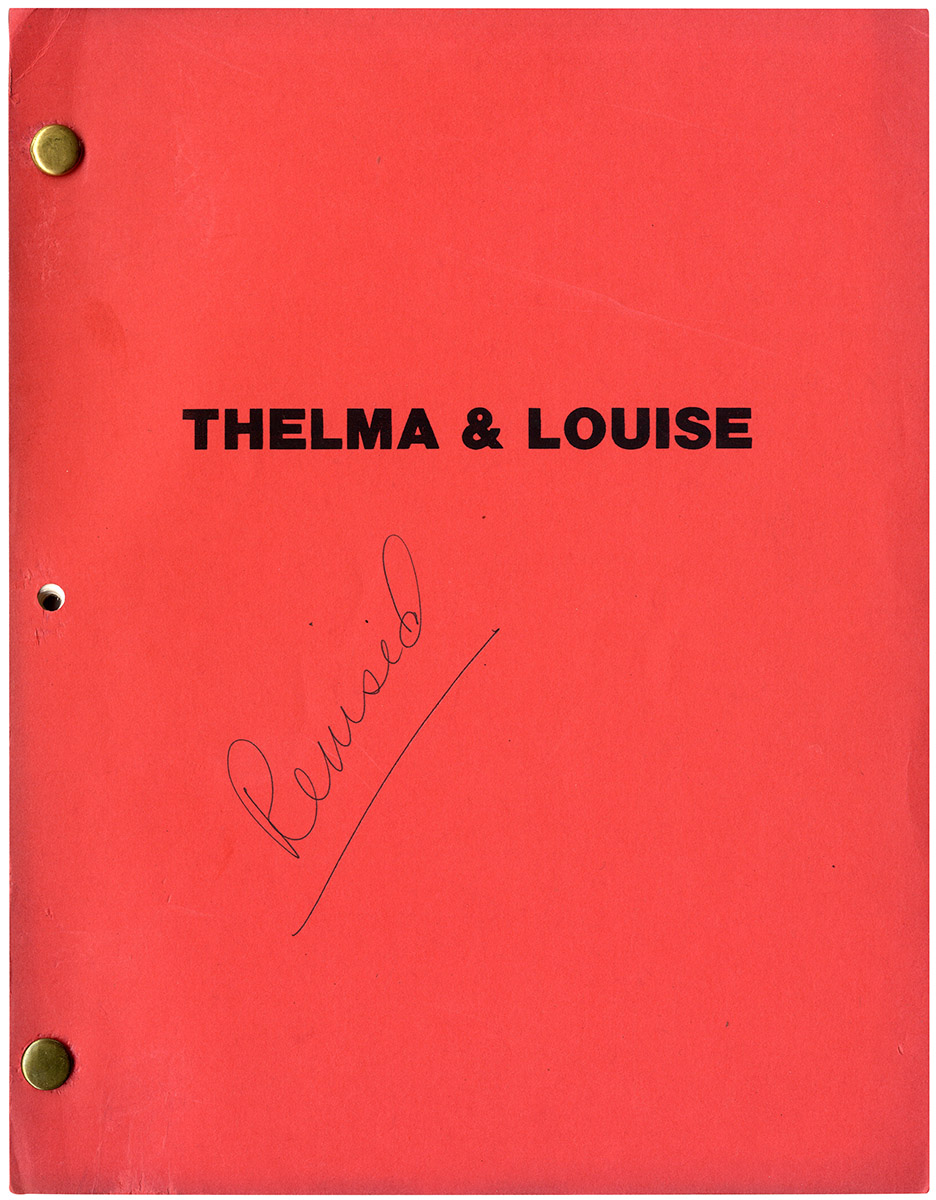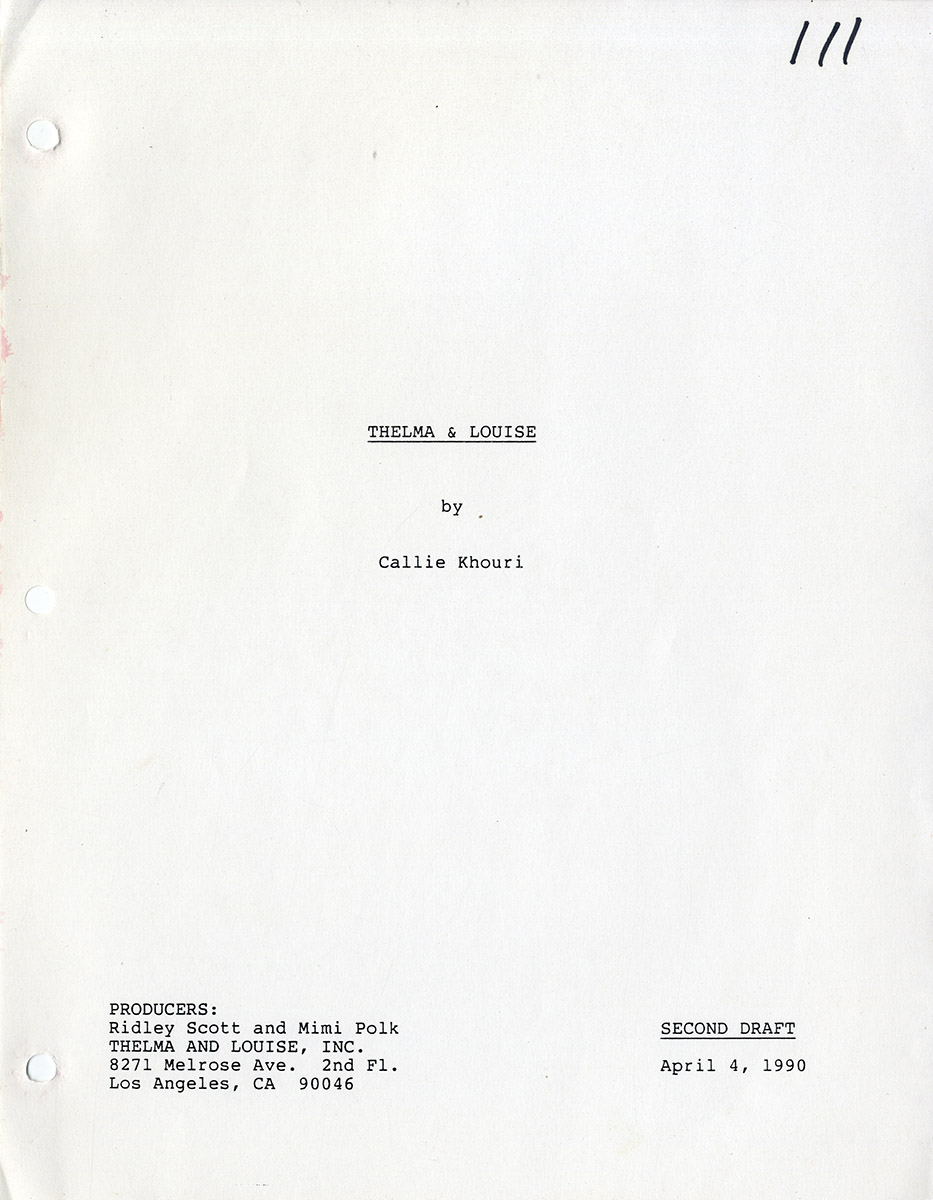Ridley Scott (director) THELMA & LOUISE (1990) Second draft film script
Los Angeles: Thelma and Louise, Inc., 1990. Second Draft script for the 1991 film, with an annotation in holograph ink of “Revised” on the front wrapper. Vintage original film script, 11 x 8 1/2″ (28 x 22 cm.), printed wrappers, brad bound, 139 leaves, with the last leaf numbered 136. Near fine.
Recognized generally as a landmark feminist film, Ridley Scott’s Thelma & Louise is actually a genre hybrid. It’s a female buddy film, a road picture, and one of the outstanding neo-noirs of the 1990s. Callie Khouri’s screenplay, considered a classic in its own right, won the Academy Award for Best Screenplay Written Directly for the Screen, as well as Best Original Screenplay awards from the New York Film Critics Circle, the Writers Guild of America, BAFTA, and the Golden Globes. Scott and Khouri’s movie was inducted into the Library of Congress National Film Registry in December 2016.
British-born director Ridley Scott was known mainly for his visionary science fiction films (Alien, Blade Runner) and historical epics (The Duelists). In Thelma & Louise, Scott applied his remarkable visual talents to the highways and cafes of the contemporary American Southwest. Known also for providing strong roles to women, most notably his introduction of Sigourney Weaver as a groundbreaking action heroine in Alien, in Thelma & Louise, Scott showcased two extraordinary female characters and performances, Geena Davis as Thelma, and Susan Sarandon as Louise.
The plot of Thelma & Louise is comparatively simple. Two female friends — Thelma, a housewife, and Louise, a waitress — embark on a road trip together. When a stranger Thelma has flirted with attempts to rape her in a parking lot, Louise shoots him. At that point, the movie turns into a classic couple-on-the-run drama, as the two women race toward Mexico trying to evade a battalion of police led by Arkansas Detective Investigator Harvey Keitel.
Reversing the “male gaze” tropes of traditional Hollywood films, Khouri’s screenplay embodies the idea of the female gaze. The women, through whom we experience the story, are never presented as sex objects. On the contrary, the most significant sex objects in Thelma & Louise are males played by Brad Pitt and Michael Madsen, two actors effectively introduced to movie audiences by this film. With the partial exception of the characters played by Madsen and Keitel, almost all of the men in this story, including Thelma’s husband, are untrustworthy pigs, and one of the principal satisfactions the film provides is seeing these macho creeps receive their just deserts at the hands of our increasingly empowered heroines.
Ultimately, Thelma & Louise paints a picture of a male-dominated world in which independent and empowered women cannot be permitted to exist. Hence, the movie’s ambivalent ending. Pursued by the police, Thelma and Louise drive their ’66 Thunderbird off a canyon cliff. But they never crash land. Instead, there is a freeze frame, followed by a montage of the two friends happy together in a kind of immortal meta-existence.
Out of stock
Related products
-
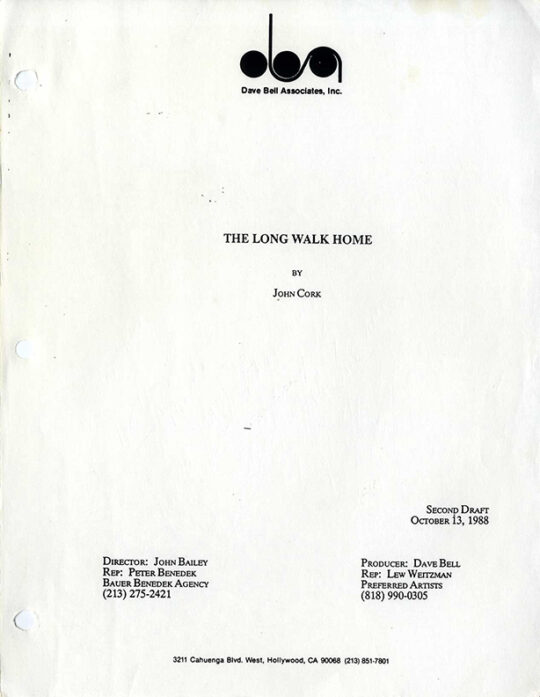
LONG WALK HOME, THE (Oct 13, 1988) Second draft film script by John Cork
$375.00 Add to cart -

(African American film) A PIECE OF THE ACTION [working title: SOMETHING BIG COMING UP] (Nov 1, 1976) Film script
$750.00 Add to cart -
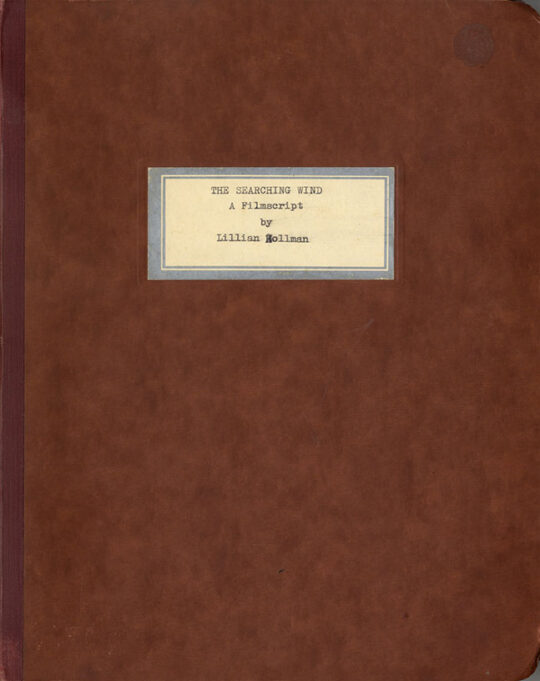
SEARCHING WIND, THE (Nov 7, 1946) Final White script by Lillian Hellman
$1,500.00 Add to cart -
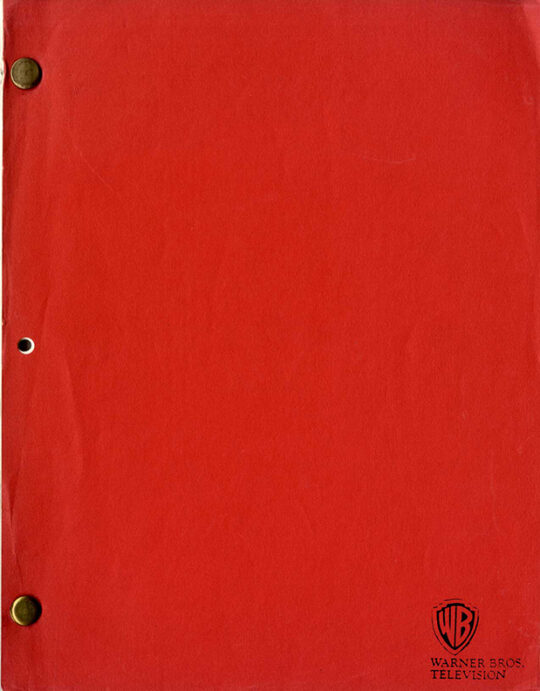
DRESS GRAY (Mar 6, 1981) Second revision script by Gore Vidal
$500.00 Add to cart

